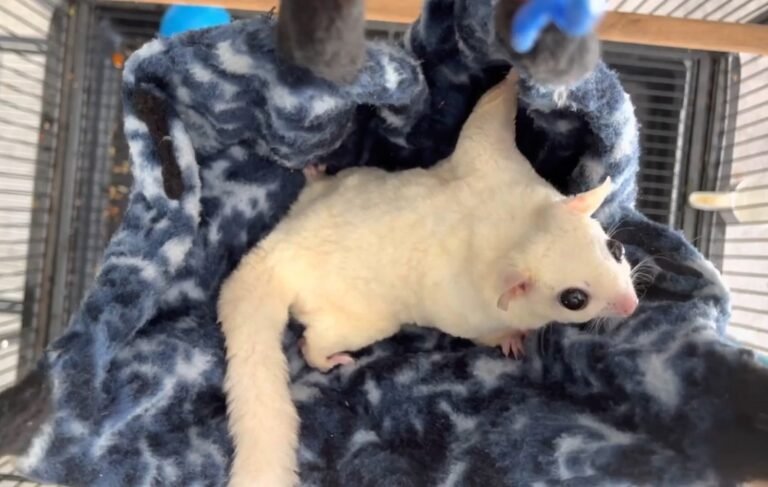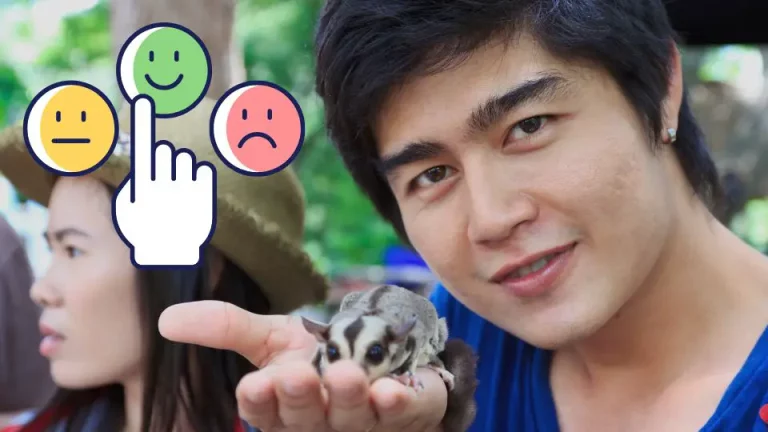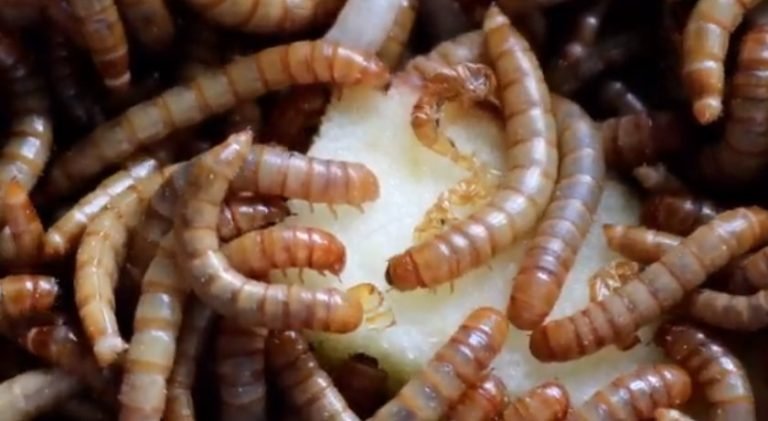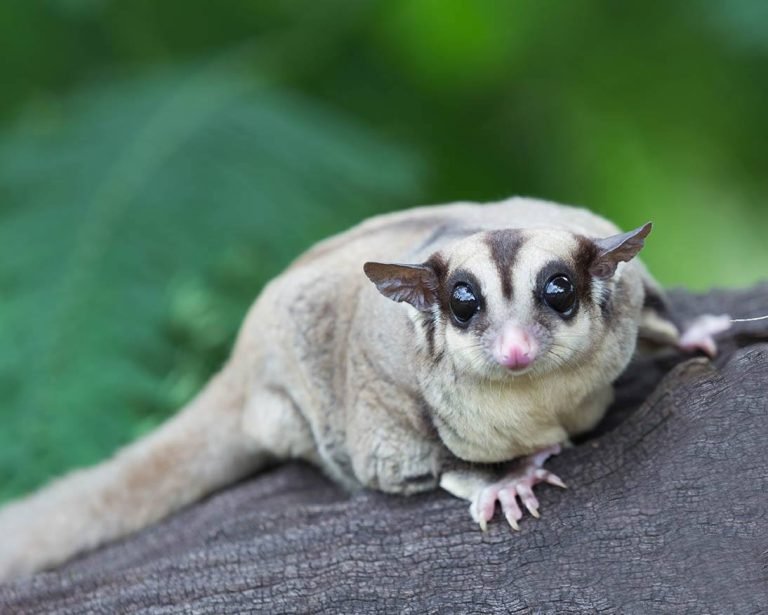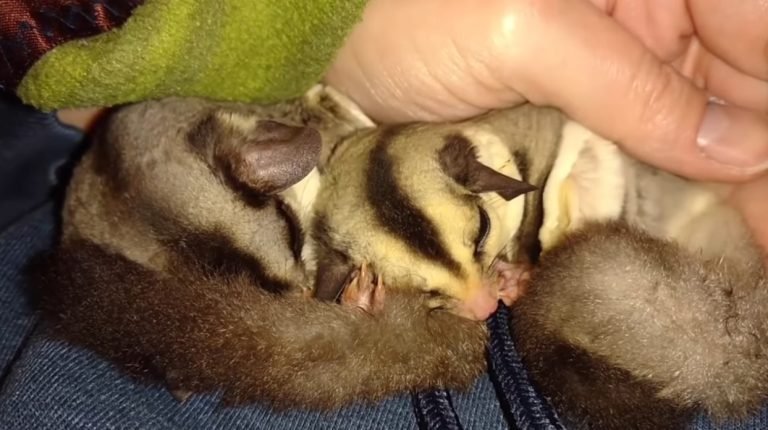How To Handle A Sugar Glider
Welcoming a sugar glider into your life can be a rewarding and enriching experience. These small, nocturnal marsupials are known for their adorable appearance, unique gliding abilities, and sociable nature, making them popular pets for those willing to put in the time and effort to understand their needs. However, it’s essential to learn the proper handling techniques and bonding strategies to ensure your sugar glider’s happiness and well-being.
In this blog, we will explore the basics of sugar glider behavior, How to handle a sugar glider, and the steps to building a trusting relationship with your new furry companion. Get ready to embark on a journey of love, trust, and understanding with your sugar glider by your side.
Why We Need Know To Handle Sugar Glider
As sugar gliders continue to win hearts as enchanting and unique pets, it is vital to understand the significance of proper handling and care for these small, social marsupials. Unlike traditional pets, sugar gliders have specific needs that require dedicated attention and a strong bond with their human companions. In this blog, we will explore the reasons why learning to handle sugar gliders is essential for their well-being, the impact of a trusting relationship on their overall health, and how it leads to a fulfilling, lifelong connection. Join us on this journey as we uncover the captivating world of sugar gliders and learn how to ensure their happiness and create an unbreakable bond with these extraordinary creatures.
Way To Handle Sugar Gliders

There are many ways to handle sugar gliders are as follows:
Understanding Sugar Glider Behavior
Before you begin handling your sugar glider, it is essential to understand their natural behavior and instincts. Sugar gliders are social animals that thrive in groups, called colonies. In the wild, they form strong bonds with their colony members, and this need for companionship extends to their human caretakers. To ensure your sugar glider’s emotional well-being, be prepared to invest time and effort into bonding and socializing with them.
Sugar gliders are also prey animals, so they have a natural instinct to be cautious and may be skittish or fearful around humans initially. Patience and understanding are crucial to building trust and helping your sugar glider become comfortable with handling.
Preparing Your Sugar Glider’s Environment
Before bringing your sugar glider home, make sure you have an adequately sized cage (at least 24x24x36 inches) with plenty of climbing and hiding spaces. Provide them with a variety of toys, branches, and ropes for mental and physical stimulation. Ensure they have access to a safe nesting area where they can retreat when feeling overwhelmed or scared.
Gaining Trust through Scent
One of the essential aspects of bonding with your sugar glider is familiarizing them with your scent. Wear a small cloth or piece of fabric close to your body for a few hours, then place it in your sugar glider’s cage. This will help them associate your scent with safety and comfort.
The Initial Introduction
When you first bring your sugar glider home, give them time to adjust to their new environment. Limit handling during this period, and allow them to explore their cage and get used to their surroundings. After a few days, you can start the process of bonding and handling.
Offering Treats
Using treats is an excellent way to establish trust and positive associations with your sugar glider. Offer them small amounts of their favorite treats (like mealworms, fruit, or yogurt drops) from your hand, or use a spoon if they are still too skittish. Gradually decrease the distance between the treat and your body to encourage them to approach you.
The Importance of Patience
Bonding with a sugar glider can take time, and it’s crucial to remain patient and persistent. Each sugar glider is unique, and the time it takes for them to become comfortable with handling can vary. Some may take just a few days, while others may need weeks or even months to fully trust their human caretakers.
Handling Techniques
When your sugar glider is comfortable with your presence and readily accepts treats, you can begin to gently handle them. Remember to always approach them slowly and calmly, and avoid making sudden movements or loud noises. The following are some techniques for handling your sugar glider
Traveling with Your Sugar Glider
Hitting the road with your sugar glider can be an exciting adventure, but ensuring their safety and comfort is crucial. In this guide, we’ll cover essential tips for traveling with your furry companion, from selecting the right travel carrier to navigating regulations and preparing for emergencies. With proper planning and attention to detail, you can create a smooth and enjoyable journey for both you and your sugar glider. Get ready to embark on new experiences with your beloved pet by your side, while keeping their well-being a top priority!
Grooming Your Sugar Glider
Maintaining your sugar glider’s grooming needs is crucial for their health and happiness. In this guide, we’ll explore essential grooming practices for these endearing marsupials, including fur care, nail trimming, and general hygiene. Discover how to keep your sugar glider clean and comfortable, while fostering a stronger bond through these grooming routines. Join us as we delve into sugar glider care and learn how proper grooming contributes to a thriving, well-adjusted pet, ready to glide by your side!

Advantages Of Handle A Sugar Glider
Below the advantages of handle a sugar glider:
Building trust: Proper handling techniques help establish a strong bond of trust between you and your sugar glider, creating a more fulfilling and enjoyable relationship for both parties.
Reducing stress: Handling your sugar glider with care and patience can reduce their stress levels, leading to improved mental and emotional well-being for your pet.
Easier health checks: When your sugar glider is comfortable with being handled, it becomes much easier to perform regular health checks and address any potential health concerns promptly.
Enhanced socialization: Learning how to handle your sugar glider can lead to better socialization, allowing them to interact with other sugar gliders, pets, or people in a positive and confident manner.
Positive reinforcement: Proper handling techniques, when combined with treats and positive reinforcement, can help reinforce desirable behaviors in your sugar glider and ensure they remain a happy, well-adjusted pet.
Disadvantages Of Handle A Sugar Glider
Below the disadvantages handle a sugar glider:
Risk of injury: Improper handling can lead to injuries for both the sugar glider and the owner. Sugar gliders have sharp teeth and may bite if they feel threatened or stressed, while rough handling can cause physical harm to these delicate creatures.
Increased stress: Inadequate handling techniques can cause unnecessary stress and anxiety for your sugar glider, which can negatively affect their overall health and well-being.
Weakened bond: Mishandling your sugar glider can damage the trust and bond between you, making it difficult to establish a strong connection and potentially leading to behavioral issues.
Escapes and accidents: If not handled correctly, sugar gliders may attempt to escape or accidentally fall from your grasp, potentially resulting in injury or a lost pet.
Prolonged acclimation period: Poor handling can prolong the time it takes for your sugar glider to become comfortable and acclimate to their new environment, delaying the formation of a strong bond and making daily care more challenging.
Final Thoughts
Handling and bonding with your sugar glider is a crucial aspect of ensuring their happiness, health, and well-being. By understanding their unique needs and investing time in building trust, you can establish a strong, lifelong connection with your furry companion. Remember that patience, persistence, and proper techniques are key to creating a positive and stress-free experience for both you and your sugar glider.
As you continue to learn and grow together, you’ll find that the rewards of sharing your life with these captivating marsupials are immeasurable. So, embrace the journey, cherish the bond, and enjoy the unforgettable moments that come with being a devoted and caring sugar glider owner.
FAQs
1.Do sugar gliders like to be held?
Sugar gliders, as social creatures, can enjoy being held once a trusting bond is formed. While they may initially be cautious, consistent, gentle handling builds their confidence, allowing them to seek comfort and companionship in their human caretakers.
2.How do you pick up a sugar glider?
To pick up a sugar glider, calmly approach and gently scoop them onto your open palm, providing a stable surface for them to stand on. This non-threatening technique helps foster trust, ensuring your furry friend feels secure during handling.
3.How often should I hold my sugar glider?
Regular interaction is vital for sugar gliders’ well-being. Aim to hold your sugar glider daily, ideally for at least 30 minutes to an hour. Consistent bonding time nurtures trust, encourages socialization, and fosters a healthy, lasting connection.
4.How do you tell if a sugar glider likes you?
A sugar glider’s affection is evident through their willingness to approach you, climbing onto your hand or body, and engaging in grooming or nesting behaviors around you. These signs indicate trust, comfort, and a strong bond between you and your furry companion.
5.Why does my sugar glider scream?
A sugar glider may scream due to fear, stress, or discomfort. This vocalization can be triggered by sudden movements, loud noises, or unfamiliar situations. Identifying the cause and providing reassurance will help alleviate their distress and ensure their well-being.



